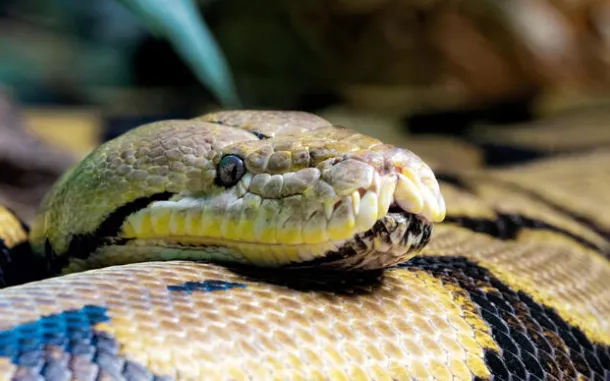Scientific Classification Quick Overview The Reticulated Python (Python reticulatus) is an awe-inspiring and non-venomous snake, celebrated as one of the world’s largest snake species. Indigenous to Southeast Asia, these serpents have fascinated and captivated people for centuries due to their enormous size and striking appearance. Fast Facts Did you know? Reticulated Pythons are known for …
Reptile
Scientific Classification Quick Overview The Common Boa Constrictor (Boa constrictor) is a remarkable and non-venomous snake, well-known for its beauty, large size, and intriguing behavior. Native to the Americas, these snakes have found popularity in the pet trade and among reptile enthusiasts. Fast Facts Did you know? Boa Constrictors are exceptional climbers and can be …
Scientific Classification Quick Overview The King Snake, part of the Lampropeltis genus, is a captivating and diverse group of non-venomous snakes predominantly found in North and Central America. Known for their striking appearance and remarkable behaviors, King Snakes are a popular choice among snake enthusiasts and collectors. Fast Facts Did you know? King Snakes are …
Scientific Classification Quick Overview The Corn Snake (Pantherophis guttatus) is a beloved and non-venomous snake indigenous to the southeastern United States. Known for its striking appearance, gentle nature, and ease of care, it’s a popular choice among reptile enthusiasts and novice snake keepers. Fast Facts Did you know? The name “Corn Snake” may originate from …
Scientific Classification Quick Overview Hognose snakes are notable for their distinct upturned snouts, used effectively for digging and burrowing. Predominantly found in North America, their gentle disposition combined with unique defensive behaviors has earned them popularity in the pet trade. Fast Facts Did you know? When threatened, hognose snakes might enact a convincing death-feigning display, …
Scientific Classification Quick Overview The Gila Monster (Heloderma suspectum) stands out as one of only two venomous lizards globally. It can be found in the southwestern United States and northwestern Mexico. The lizard’s striking patterned skin and venomous bite serve as a beacon of both curiosity and caution. Fast Facts Did you know? The name …
Scientific Classification Quick Overview The Frilled Lizard (Chlamydosaurus kingii), often referred to as the Frill-necked Lizard, is a unique reptile renowned for the dramatic frill around its neck. Native to Australia and Papua New Guinea, this lizard has fascinated people worldwide with its distinctive defensive posture. Fast Facts Did you know? The Frilled Lizard predominantly …
Scientific Classification Quick Overview The Komodo Dragon (Varanus komodoensis), recognized as the world’s largest living lizard, is an apex predator primarily found on the Indonesian islands of Komodo, Rinca, Flores, and Gili Motang. With its impressive stature, potent claws, and an acute sense of smell, it reigns supreme in its native environment. Fast Facts Did …
Scientific Classification Quick Overview The Green Iguana (Iguana iguana), often simply referred to as “iguana,” is one of the most recognizable and widespread reptiles. Native to Central and South America and the Caribbean, these lizards have become iconic in popular culture and have also been introduced to regions outside their natural habitat, partly due to …
Scientific Classification Quick Overview The Blue Iguana (Cyclura lewisi), also known as the Grand Cayman Iguana, is a vibrantly colored lizard endemic to the Grand Cayman Island. With its distinct blue hue and casqued head, this species stands out not only for its beauty but also its status as one of the most endangered lizards. …










